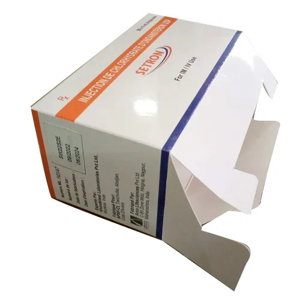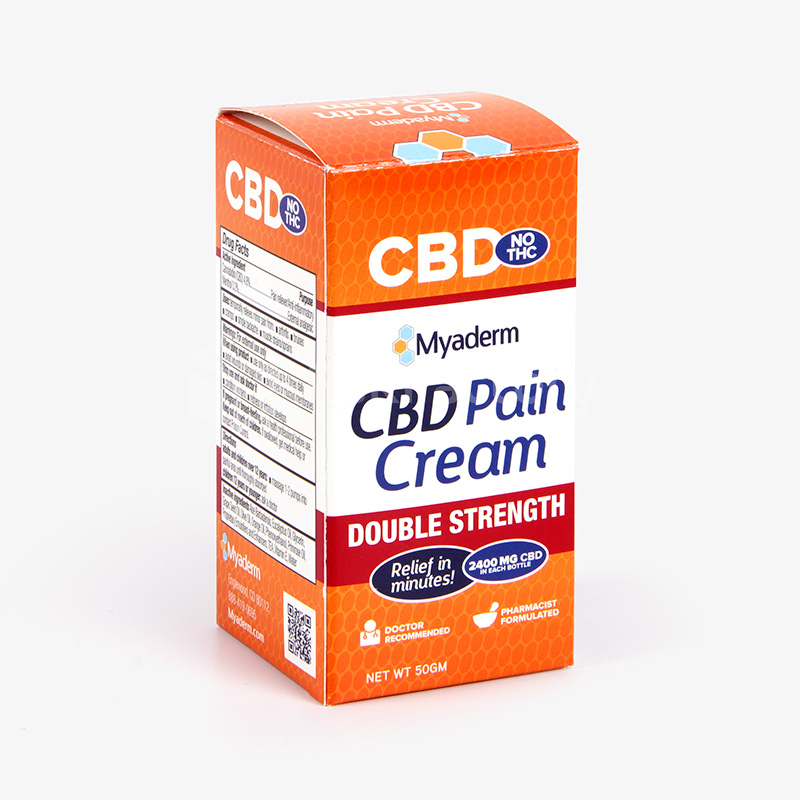- All
- Product Name
- Product Keyword
- Product Model
- Product Summary
- Product Description
- Multi Field Search
Views: 197 Author: XianDa Publish Time: 2024-12-06 Origin: Site

Content Menu
● How to Make a Paper Medicine Box
>> 3. Assembling the Medicine Box
>> Labeling
>> Decorating
● Medicine Paper Box Factory Considerations
● Environmental Considerations
● Innovations in Medicine Paper Box Design
● The Future of Medicine Paper Boxes
● DIY vs. Factory-Produced: Making the Right Choice
>> Factory-Produced Advantages:
Creating a paper medicine box is a practical and creative DIY project that can be both functional and decorative. This comprehensive guide will walk you through the process of making your own paper medicine box, providing step-by-step instructions, tips, and variations to suit different needs. Whether you're looking to organize your medications or create a unique gift box, this tutorial has you covered.


Before we begin, gather the following materials:
- Cardstock or thick paper (20x20 cm for the main box, 15x15 cm for compartments)
- Ruler
- Pencil
- Scissors or craft knife
- Paper glue or double-sided tape
- Optional: Decorative paper for covering
1. Start with a 20x20 cm square of cardstock.
2. Fold the paper in half both vertically and horizontally, then unfold.
3. Fold each corner to the center point.
4. Unfold and fold each edge to the center crease.
5. Cut along the folds on two opposite sides, up to the first fold line.
6. Fold up the sides and tuck in the flaps to form the box.
Origami Pill Box Tutorial
1. Use 15x15 cm squares for each compartment.
2. Follow steps 1-4 from the main box instructions.
3. Cut and fold to create smaller boxes that fit inside the main box.
1. Place the compartments inside the main box.
2. Adjust as needed to ensure a snug fit.
To ensure proper medication management, consider adding labels to your medicine box:
1. Use small stickers or paper tags.
2. Write medication names, dosages, and schedules.
3. Attach labels to each compartment.
Personalize your medicine box with these decorative ideas:
1. Cover the exterior with patterned paper.
2. Use washi tape to add colorful accents.
3. Draw or paint designs directly on the box.
Decorated Medicine Box
For those looking to create more sophisticated medicine boxes, consider these advanced methods:
1. Create multiple boxes of decreasing sizes.
2. Stack them to form a tiered organizer.
3. Use ribbon or string to secure the layers.
1. Make a slightly larger outer box.
2. Create a smaller inner box that slides in and out.
3. Add a pull tab for easy access.
To ensure your paper medicine box lasts longer:
1. Use high-quality, thick paper or cardstock.
2. Reinforce corners and edges with extra paper or tape.
3. Consider laminating the exterior for water resistance.
4. Apply a thin layer of clear varnish for added protection.
While making your own medicine box can be a fun project, professional medicine paper box factories offer several advantages:
1. Consistent Quality: Factories use standardized processes to ensure uniform quality across all boxes.
2. Mass Production: For large-scale needs, factories can produce medicine boxes in high volumes efficiently.
3. Specialized Materials: Professional manufacturers have access to pharmaceutical-grade materials that meet industry standards.
4. Printing Capabilities: Factories can offer high-quality printing for labels, instructions, and branding directly on the boxes.
5. Regulatory Compliance: Medicine paper box factories are equipped to meet strict regulatory requirements for pharmaceutical packaging.
Industrial Medicine Box Production
If you're considering sourcing from a medicine paper box factory, keep these factors in mind:
- Material Selection: Ensure the factory uses appropriate materials for pharmaceutical packaging.
- Quality Control: Inquire about their quality assurance processes.
- Customization Options: Discuss possibilities for custom sizes, designs, and printing.
- Minimum Order Quantities: Be aware of any minimum order requirements.
- Certifications: Check for relevant industry certifications and compliance standards.
When making or sourcing medicine boxes, consider the environmental impact:
1. Use recycled or sustainably sourced paper when possible.
2. Opt for eco-friendly inks and adhesives.
3. Design boxes that are easily recyclable after use.
4. Consider biodegradable options for short-term use boxes.
Whether making your own medicine box or using a factory-produced one, keep these safety tips in mind:
1. Ensure the box is child-resistant if necessary.
2. Use non-toxic materials, especially for the interior.
3. Include clear labeling to prevent medication mix-ups.
4. Store the box in a cool, dry place away from direct sunlight.
As the pharmaceutical industry evolves, so does the design of medicine paper boxes. Here are some innovative trends:
Some medicine paper box factories are incorporating smart technology into their designs:
1. QR Codes: Printed QR codes on boxes can link to detailed medication information or instructional videos.
2. NFC Tags: Near Field Communication tags can be embedded in boxes, allowing patients to access information with a smartphone tap.
3. Temperature Indicators: Special inks that change color with temperature fluctuations can be used to ensure proper storage conditions.
Eco-friendly options are becoming increasingly popular:
1. Plant-based Plastics: Some factories are using biodegradable plastics derived from plant sources for coatings or windows.
2. Stone Paper: Made from calcium carbonate and non-toxic resin, stone paper is water-resistant and tree-free.
3. Mushroom Packaging: Experimental designs use mycelium (fungal roots) to create biodegradable packaging.
To combat counterfeiting and ensure patient safety, advanced security measures are being implemented:
1. Holographic Seals: These difficult-to-replicate seals can verify the authenticity of the medication.
2. Tamper-Evident Designs: Boxes with special perforations or seals that show if the package has been opened.
3. Serialization: Unique codes printed on each box for tracking and verification purposes.
Looking ahead, we can expect to see continued innovation in the field of medicine paper box design and production:
1. Personalization: With the rise of personalized medicine, we may see more customized packaging tailored to individual patient needs.
2. Interactive Packaging: Augmented reality features could allow patients to visualize proper dosage or see potential side effects.
3. Biodegradable Electronics: Future boxes might incorporate biodegradable electronic components for advanced tracking and information display.
When deciding between making your own medicine box and purchasing from a medicine paper box factory, consider these factors:
- Personalization and creativity
- Cost-effective for small quantities
- Immediate availability
- Professional-grade materials and construction
- Compliance with regulatory standards
- Scalability for large quantities
- Advanced features and printing capabilities
For personal use or small-scale projects, DIY boxes can be an excellent choice. However, for businesses, healthcare providers, or those requiring large quantities of medicine boxes, partnering with a reputable medicine paper box factory is often the most efficient and compliant option.
Creating your own paper medicine box can be a rewarding and practical project. By following this guide, you can craft a customized solution for organizing your medications or create unique gift packaging. Remember to prioritize safety and proper labeling, especially when dealing with medications.
For those requiring large quantities or professional-grade medicine boxes, partnering with a reputable medicine paper box factory is advisable. These manufacturers can provide consistent quality, regulatory compliance, and scalable production to meet diverse needs in the pharmaceutical and healthcare industries.
Whether you choose to DIY or source from a factory, a well-designed medicine box contributes to better medication management and safety. As technology and materials science advance, we can expect to see even more innovative and sustainable solutions in the world of medicine packaging.
1. Q: Can I use regular printer paper to make a medicine box?
A: While possible, it's not recommended. Regular printer paper is too thin and may not provide adequate protection or durability. Opt for cardstock or thicker paper for better results.
2. Q: How can I make my paper medicine box water-resistant?
A: You can apply a thin layer of clear, water-resistant varnish to the exterior of the box. Alternatively, consider laminating the paper before constructing the box.
3. Q: Are homemade paper medicine boxes suitable for long-term medication storage?
A: Homemade boxes are best for short-term use or organization. For long-term storage, especially for sensitive medications, it's advisable to use professionally manufactured, pharmaceutical-grade containers.
4. Q: How do I ensure my medicine box meets safety standards?
A: For personal use, focus on durability and proper labeling. For commercial purposes, consult with a professional medicine paper box factory to ensure compliance with relevant safety and regulatory standards.
5. Q: Can I recycle my paper medicine box when I'm done with it?
A: In most cases, yes. Paper medicine boxes are typically recyclable, especially if made from cardstock without plastic coatings. Remove any non-paper elements before recycling.